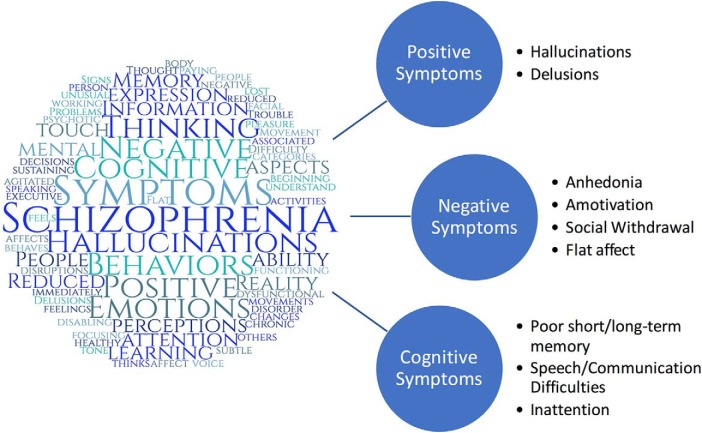Figure 1.
Left, An original diagram of the term “schizophrenia” in a word cloud created with text from the “Signs and Symptoms” section of a website published by the National Institute of Mental Health (2016) on schizophrenia. Word cloud created using web-based tool on www.WordClouds.com. Right, Examples of symptoms that fall within positive, negative, and cognitive symptom domains in schizophrenia (Rolls et al., 2008; American Psychiatric Association, 2013). Positive symptoms are thoughts, behaviors, or sensory perceptions that are atypically present in patients and outside of the sociocultural norms. Negative symptoms are thoughts, emotions, or behaviors that are absent/impaired in patients but typical of most individuals. Cognitive symptoms are undesirable changes in various cognitive domains, including memory, attention, and reasoning. For these symptoms to be of clinical relevance, they need to be persistent (at least 1 month or more) and interfere with several life domains (e.g., social relationships, work, self-care, etc.).

